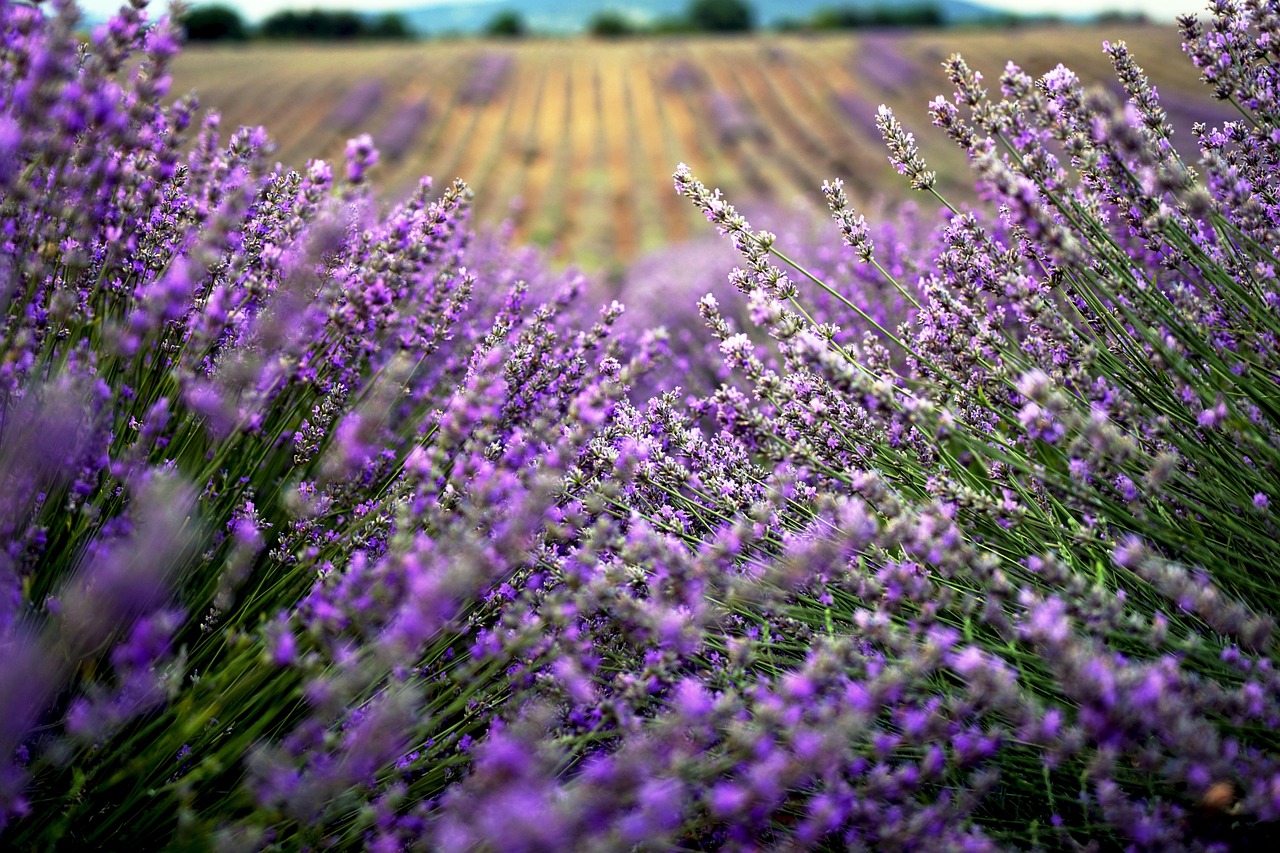
The Air We Breathe, the Life We Share
By Gayil Nalls
Sign up for our monthly newsletter!
I just finished reading Air-Borne: The Hidden History of the Life We Breathe by science writer Carl Zimmer. The book traces the evolution of aerial biology—an interdisciplinary field concerned with the living and particulate elements suspended in our atmosphere—from its philosophical roots in ancient Greece to the scientific developments of the 20th century. Zimmer begins with the ancient concept of miasma, as articulated by Hippocrates, who described disease as emanating from “an invisible corruption of the air.” For centuries, this idea shaped public health responses and was erroneously invoked to explain plagues that were caused by bacteria carried by fleas on rodents.
In the 1930s, a small cohort of scientists began to seriously investigate the airborne transmission of respiratory pathogens, but their work was soon subsumed by state-sponsored biological weapons programs. While Zimmer offers a compelling account of this shift—from medical inquiry to militarized secrecy—I found myself wishing the book had delved more deeply into another aspect of aerial biology: the profound, often unconscious influence of airborne materials not as threats, but as mediators of perception, memory, and meaning.
This is where my research into the aerobiome departs. I define the microbiome of the air to include the diverse, ever-shifting community of atmospheric microorganisms and biogenic volatile organic compounds (BVOCs), the natural aromatic emissions (essential oils) of plants. To fulfill their biological function, plant volatiles are released into the atmosphere and travel to other plants and to the sensory organs of other organisms. Several environmental factors modulate this transfer—temperature and light, to name a few—and different plant species emit different BVOCs at varying rates. These airborne molecular agents don’t merely interact with ecosystems, they interact with our immune systems, our respiratory tracts; they participate in our inner life—in the formation of qualia, the ineffable textures of conscious experience.
Qualia are those deeply subjective impressions—experiences of consciousness that define the lived world: the scent of crushed rosemary evoking childhood kitchens, or the sudden lift in mood brought on by a whiff of orange blossom on a warm breeze. These plant vapors are not incidental byproducts of perception; they are central to our embodied understanding of reality. Plant volatiles modify the physiology and behavior of organisms—from microbes to mammals—and shape ecological and evolutionary processes. Aromatic biogenic VOCs—complex mixtures of terpenes, esters, and phenols—activate the olfactory nerve and send signals directly to the limbic brain, which governs emotion, memory, and instinct. In this way, they engender what philosopher Eugene Gendlin called felt meaning—an implicit, pre-verbal understanding that arises within the body, often before thought or language.
My theoretical framework resonates strongly with recent research in neuroaesthetics, a field that examines how sensory stimuli, particularly in art, nature, and design, evoke emotional and cognitive responses in the brain. Studies show that olfactory cues are among the most emotionally charged sensory inputs, capable of triggering vivid autobiographical memories and altering affective states within milliseconds. The aerobiome, through its invisible emissions, functions almost like an ambient, participatory artwork—constantly sculpting perception at both individual and collective scales.
During my research in the early 2000’s I met Semir Zeki in London as an advisor. He was studying how the brain processed aesthetic experiences and was credited with founding the field of neuroaesthetics. Years later, in 2015, I had the opportunity to speak with Anjan Chatterjee, MD, Professor of Neurology at the University of Pennsylvania, also one of the founding figures in the field of neuroaesthetics, whose research has significantly advanced our understanding of the neural foundations of aesthetics. Chatterjee has explored how the brain perceives beauty and meaning through various sensory modalities, including vision, touch, and scent. His work specifically addresses how olfactory stimuli engage brain regions involved in memory, emotion, and decision-making, revealing the powerful role that scent plays in shaping cognition and aesthetic experience.
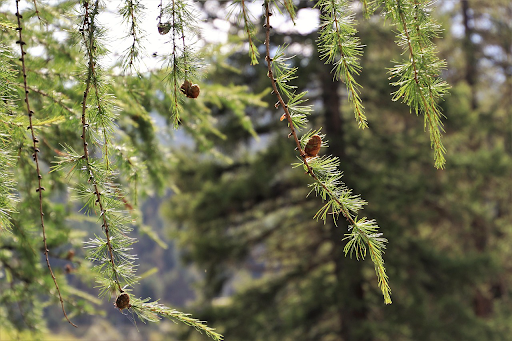
Although Antonio Damasio’s research does not explicitly address the aerobiome or aromatic air, his theoretical framework provides critical insight into how airborne molecules, such as plant-emitted volatiles and microbial compounds, can influence human affect, perception, and cognitive function. Central to Damasio’s work is the concept that emotions are embodied processes arising from the brain’s ongoing monitoring and mapping of internal physiological states, a function essential to homeostatic regulation.
Aromatic compounds carried through the air engage the olfactory and trigeminal systems, eliciting activity not only in primary olfactory pathways but also in emotion-related cortical regions such as the amygdala, insula, and orbitofrontal cortex. This neural integration supports Damasio’s somatic marker hypothesis, which posits that bodily signals play a critical role in decision-making and emotional evaluation. In The Feeling of What Happens, Damasio elaborates on how core consciousness arises from the brain’s capacity to represent bodily states in real time. Airborne volatiles—particularly biologically salient compounds such as terpenes, phytoncides, and microbial VOCs—may function as external sensory inputs that are internalized and processed through these interoceptive mechanisms, thereby modulating emotional states and self-awareness.
Damasio’s framework thus offers a neurobiological rationale for the observed psychophysiological effects of scent-rich, biodiverse environments. The inhalation of aromatic air, laden with ecologically meaningful molecules, can influence mood, cognition, and social behavior, supporting emerging research on the role of the aerobiome in neuroaffective health and human-environment interaction.
Sensory studies, too, have long emphasized that the senses are not passive receptors but active participants in meaning-making. The inhalation of aromatic air is not simply a physiological act, it is also cultural, historical, and ecological. Scents carry with them place-based identities, ancestral memories, and social knowledge. In many Indigenous and local knowledge systems, the scent of a plant is a signifier of seasonal rhythms, medicinal potency, and spiritual presence. The aerobiome, then, is not just a biological phenomenon but a repository of lived, culturally embedded experience.
From the perspective of environmental philosophy, this radically expands our conception of atmospheric life. The air is not merely a background or medium; it is a vital interface between human consciousness and the more-than-human world. It bears the signatures of forests, bogs, agricultural cycles, and microbial communities. To breathe, in this context, is to participate in a multispecies exchange—a communion with ecosystems that act on us even as we alter them. Aromatic compounds, through this lens, are agents of ecological intimacy, revealing how entangled our minds are with the chemical and biological flows of the planet.
My working theory is that this atmospheric entanglement influences not only individual perception but also collective cognition. Through shared exposure to particular airborne compounds—especially in environments rich with aromatic plant life, communities may develop affective synchrony: subtle resonances in emotional tone or awareness that inform social cohesion, creativity, and cultural expression. In this way, the aerobiome could be seen as a scaffolding for what might be called atmospheric consciousness: a distributed, relational field shaped by biological aerosols, environmental conditions, and human receptivity.
My working theory, with the broader Arab Spring, emphasizes how jasmine, both as a symbolic and aromatic element, figures in the cultural heritage of several affected countries. The Jasmine Revolution—Tunisia’s 2010–2011 leaderless uprising that sparked the Arab Spring, is often studied through geopolitical and digital paradigms, highlighting economic inequality, authoritarian repression, and the mobilizing power of social media. Yet less examined is how the revolution’s sensory-symbolic dimension—anchored in the evocative figure of jasmine, resonated not only in Tunisia but across a constellation of nations where jasmine is part of the olfactory and cultural heritage.
Jasmine (Jasminum sambac, J. grandiflorum, J. officinale) is more than a flower in this region—it is a cultural signifier deeply embedded in memory, domestic life, and artistic expression. Its fragrance infuses evening streets, family courtyards, market stalls, and ceremonial gatherings throughout North Africa and the Middle East. The name “Jasmine Revolution,” though not initially adopted by Tunisian activists themselves, quickly became a media shorthand that foregrounded this potent emblem of beauty, modesty, and national identity.
Following Tunisia’s lead, uprisings surged across the region, in Egypt, Libya, Yemen, Syria, Bahrain, and beyond, countries where jasmine is similarly entwined with national or regional identity. In Egypt, for instance, jasmine tea and oil are fixtures in daily life and perfumery; in Syria, Damascus was once a famed center for jasmine cultivation, giving rise to the moniker City of Jasmine. In Yemen, jasmine is commonly worn by women in their hair and used in rituals of hospitality. These shared olfactory traditions, while not causal agents of revolution, shaped a common atmospheric substrate—a background field of memory, meaning, and emotional readiness.Of course, there are many other examples. During peak lavender season, the air in rural Provence becomes saturated with the plant’s volatile oils. Visitors like me and residents alike describe a sense of calm, well-being, and openness that coincides with the ambient aroma. This isn’t just anecdotal—lavender’s main compound, linalool, has documented anxiolytic effects. These mass inhalations create a kind of ambient therapeutic space, reinforcing cultural rituals of celebration and communal relaxation.

In 2015, I visited the Jungfraujoch High-Altitude Research Station at the summit of the Swiss Alps. At 11,320 feet (3,450 meters) above sea level, it is the highest research station in Europe. It is operated by The International Foundation High Altitude Research Stations Jungfraujoch and Gornergrat and has been critical in early measurements of climate-altering substances like CO₂, well before global warming was a mainstream concern. The same is true of detecting the pollution reach of fragrance chemicals.
Because it’s located so high and away from urban pollution sources, the Jungfraujoch station is ideal for detecting and studying long-range transported atmospheric pollutants, including pollutants originating from industrial regions across Europe and even further afield.
When I was there, researchers were discovering that aerosol particle emissions, such as pinene molecules released by trees and carried upward with rising air, contribute to cloud formation. They were also struck by the unexpectedly high concentrations of fragrance chemicals and other anthropogenic organic compounds detected in the atmosphere, revealing how far and high human-made substances can travel. Studies over the past two decades have shown that synthetic fragrance compounds, commonly emitted from personal care and cleaning products, are capable of long-range atmospheric transport and have been found deposited in remote alpine snowpacks, including at high-altitude research sites like Jungfraujoch. This body of research underscores the global reach of anthropogenic pollutants and the need to monitor their presence in sensitive and seemingly pristine ecosystems.

The detection of synthetic fragrance chemicals at Jungfraujoch serves as a stark reminder that no place on Earth is beyond the influence of industrial and consumer emissions. As the atmosphere becomes an increasingly interconnected medium for synthetic chemical exchange, continued high-altitude monitoring is not just valuable, it is essential. It enables us to trace the invisible threads of pollution back to their sources, and to better understand how our daily choices reverberate across global ecosystems, from crowded cities to alpine summits.
In 2016, I spoke with Milton Wainwright, BSc, PhD, a microbiologist and astrophysicist then serving as a Senior Lecturer at Sheffield University in the UK. Wainwright’s research opened profound and provocative questions relevant to our evolving understanding of the aerobiome—the vast and largely uncharted domain of airborne life that includes bacteria, viruses, fungal spores, pollen, and a multitude of other microbial and biological aerosols circulating through Earth’s atmosphere.

Currently, the aerobiome is mostly understood as a community of biological particles suspended between the Earth’s surface and the lower stratosphere, but not beyond. However, Wainwright’s investigations pushed the boundaries of conventional biology, particularly through a series of high-altitude experiments involving stratospheric sampling balloons launched over England. From these balloons, Wainwright and his team recovered biological particles from altitudes exceeding 25 kilometers, well into the stratosphere and far beyond the altitude where terrestrial biological material is expected to remain suspended.
Among the recovered samples were highly unusual structures: diatom-like forms and biological cells with no apparent contamination from Earth’s surface. These findings, Wainwright argued, could not be easily explained by known atmospheric dynamics or uplift mechanisms. He posited that some of these biological entities may have extraterrestrial origins, offering their questionable provenance as possible evidence for panspermia, the hypothesis that life, or at least its building blocks, may have arrived on Earth from elsewhere in the universe.
Wainwright’s claims remain controversial, yet they underscore the mystery and complexity of the biosphere-atmosphere-aerobiome interface. His work challenges us to expand our definitions of life, its systems, and its distribution, not only across planetary ecosystems but potentially across cosmic scales. It also raises compelling implications for how we understand the aerobiome and its potential to restore our awareness of the sensual interdependencies that bind us to each other, to place, to the living Earth, and to the universe, not just as a local ecological phenomenon, but as part of a planetary system possibly linked to larger, even galactic, biological processes.
In closing, the inhaled aerobiome invites us to reconceive the atmosphere not merely as a backdrop to life but as a living, sensory-rich matrix, an interwoven field shaped by and shaping biological, cultural, and even cosmic forces. From the microscopic to the universal, it operates as an invisible infrastructure of constant exposure, response, connection, and cognition. While Zimmer’s historical lens illuminates the unhealthy dangers once attributed to the air and the cellular vulnerabilities they provoke, my research gestures toward a more expansive view, one that embraces the generative, salutary, and aesthetic dimensions of airborne life. Bioaerosols are not solely vectors of disease; they are also carriers of memory, mood, meaning, and multispecies entanglement. To engage with the aerobiome is to awaken to an ecological consciousness borne on the wind, one that crosses disciplinary boundaries and compels us toward a more attuned, embodied, and ethical relationship with each breath.
Gayil Nalls, PhD is an interdisciplinary artist, theorist, and conservationist based in New York City and the Hudson Valley. Renowned as a pioneer in olfactory art, Nalls’ practice integrates culture, science, and philosophy, exploring themes such as collective memory, sensory experience, and human co-evolution with nature. She is the founder and director of the World Sensorium Conservancy.
Top photo: pixabay.com, photo by valleria_stz
Selected Sources
Abram, D. (1996). The Spell of the Sensuous: Perception and Language in a More-than-Human World. Vintage.
Chalmers, D. J. (1996). The Conscious Mind: In Search of a Fundamental Theory. Oxford University Press.
Chatterjee, A., & Vartanian, O. (2014). Neuroaesthetics. Trends in Cognitive Sciences, 18(7), 370–375.
Classen, C. (1993). Worlds of Sense: Exploring the Senses in History and Across Cultures. Routledge.
Damasio, A. (1996). The somatic marker hypothesis and the possible functions of the prefrontal cortex. Philosophical Transactions of the Royal Society B: Biological Sciences, 351(1346), 1413–1420.
Damasio, A. (1999). The Feeling of What Happens: Body and Emotion in the Making of Consciousness. New York: Harcourt.
Delgado-Baquerizo, M., et al. (2018). The microbial contribution to climate change. Nature Climate Change, 8, 479–485.
Després, V. R., et al. (2012). Primary biological aerosol particles in the atmosphere: a review. Tellus B: Chemical and Physical Meteorology, 64, 15598. https://doi.org/10.3402/tellusb.v64i0.15598
Gendlin, E. T. (1992). The primacy of the body, not the primacy of perception: How the body knows the situation and philosophy. Man and World, 25(3–4), 341–353.
Gottfried, J. A. (2006). Smell: central nervous processing. Advances in Oto-Rhino-Laryngology, 63, 44–69.
Herz, R. S. (2016). The role of odor-evoked memory in psychological and physiological health. Brain Sciences, 6(3), 22. https://doi.org/10.3390/brainsci6030022
Ingold, T. (2011). Being Alive: Essays on Movement, Knowledge and Description. Routledge.
Li, Q. (2010). Effect of forest bathing trips on human immune function. Environmental Health and Preventive Medicine, 15(1), 9–17.
Morton, T. (2010). The Ecological Thought. Harvard University Press.
Nagel, T. (1974). What is it like to be a bat? The Philosophical Review, 83(4), 435–450.
Nalls, G. (2015, January 8). Can Science Tell Us What Beauty Is? Neuroscientist Anjan Chatterjee takes us into the neurology of creativity. Nautilus.
Nalls, G. (2016, April 1). This Astrobiologist Is Collecting Unrecognizable Beings from the Stratosphere. Nautilus.
Peñuelas, J., & Staudt, M. (2010). BVOCs and global change. Trends in Plant Science, 15(3), 133–144. https://doi.org/10.1016/j.tplants.2009.12.005
Sloterdijk, P. (2009). Terror from the Air. Semiotext(e).
Yeshurun, Y., Lapid, H., Dudai, Y., & Sobel, N. (2009). The privileged brain representation of first olfactory associations. Current Biology, 19(20), 1869–1874.
Plantings
Issue 48 – June 2025
Also in this issue:
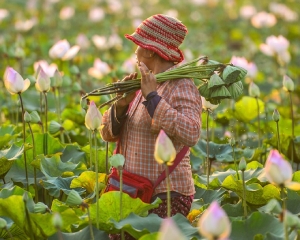
The Human and Ecological Costs of Perfume: A Call for a Social Ecological Perspective in the Fragrance Industry
By Nuri McBride

Algae ‘Perfume’ Fused with High-Tech Materials Holds Promise for Growing Coral
By Warren Cornwell

Olfactory Borders: How Rising Seas Are Rewriting the Scent of Coastal Landscapes
By Gayil Nalls
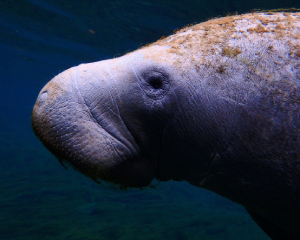
Manatees as Gardeners of the Amazon: The Ecological Role of Trichechus inunguis in Seed Dispersal, and Plant Diversity
By Gayil Nalls
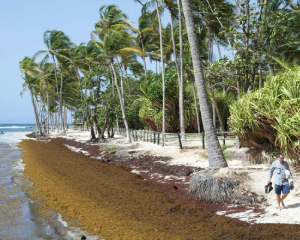
Sargassum is choking the Caribbean’s white sand beaches, fueling an economic and public health crisis
By Farah Nibbs

Eat More Plants Recipes:
Wakatouille
Wakamé Seaweed Ratatouille
By Chef Romain Delacretaz of La Table Marine, Nice, France
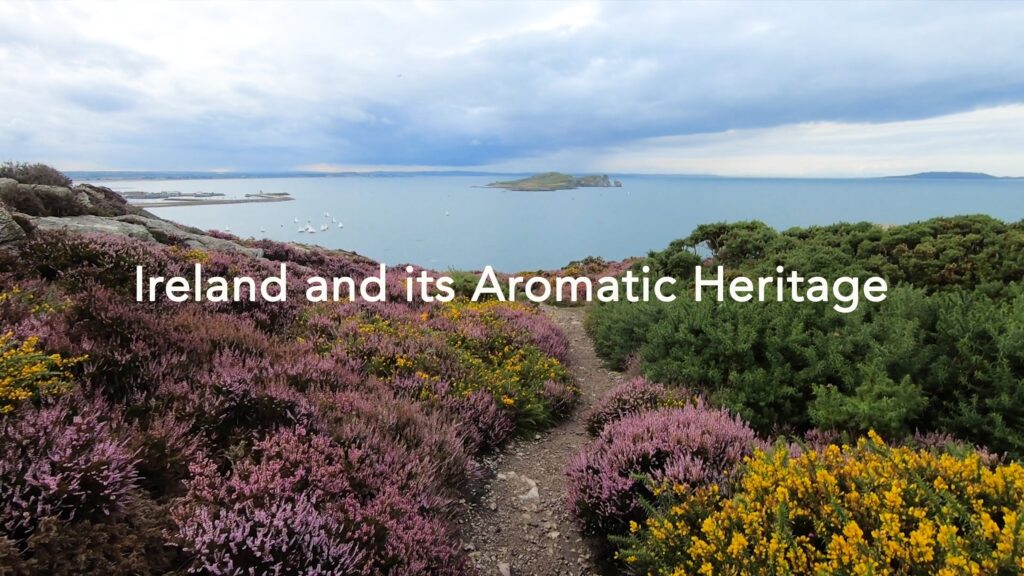
As Ireland transitions from the rich, smoky scent of peat-burning to a more sustainable future, its olfactory heritage is evolving. What will become the next iconic aromatic symbol of Ireland?
Click to watch the documentary trailer.

